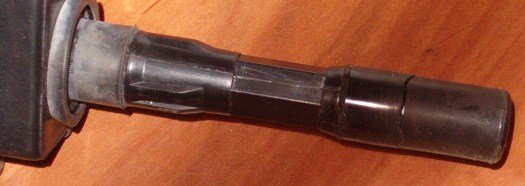I've been trying to track down a miss and I discovered a crack in the boot of one of my coils ( refer to photo). I presume that this would cause an arcing of the spark(?)
I have all of the coils out of the car and when I tested using a multimeter, the needlle on the Ohms gauge pegs in the direction of "0 " . The temp in the garage was around 50-60 degrees ( F). The manual states that a reading of between .9 and 1.1 should occur when the coil temp is 77 degrees.
Q-I presume that I should expect the readings to rise when the coils are warmer. How important is it that they be exactly 77 degrees ? I brought all of the coils into the house for another reading once they warm up a bit.
I have all of the coils out of the car and when I tested using a multimeter, the needlle on the Ohms gauge pegs in the direction of "0 " . The temp in the garage was around 50-60 degrees ( F). The manual states that a reading of between .9 and 1.1 should occur when the coil temp is 77 degrees.
Q-I presume that I should expect the readings to rise when the coils are warmer. How important is it that they be exactly 77 degrees ? I brought all of the coils into the house for another reading once they warm up a bit.
Attachments
Last edited:






